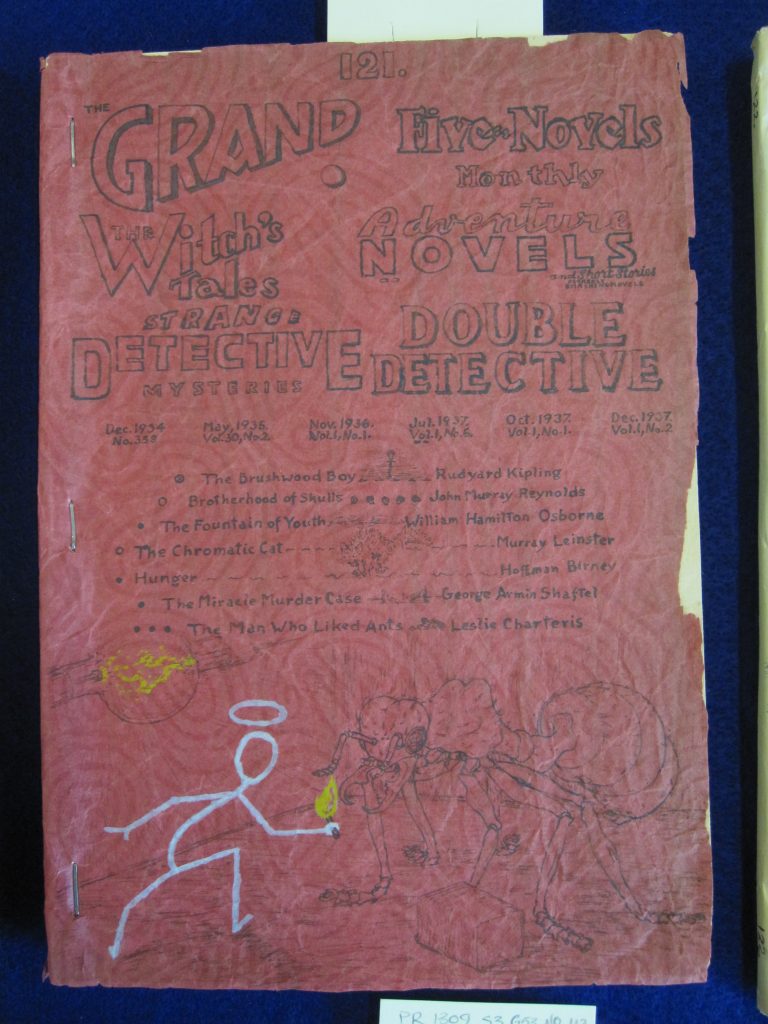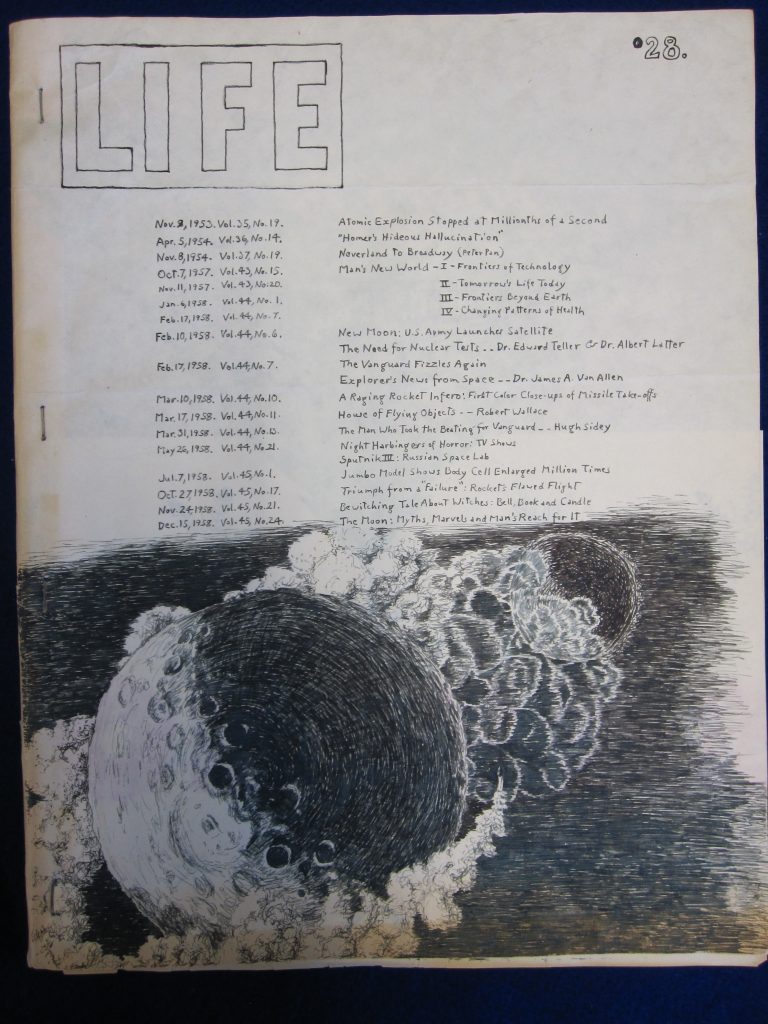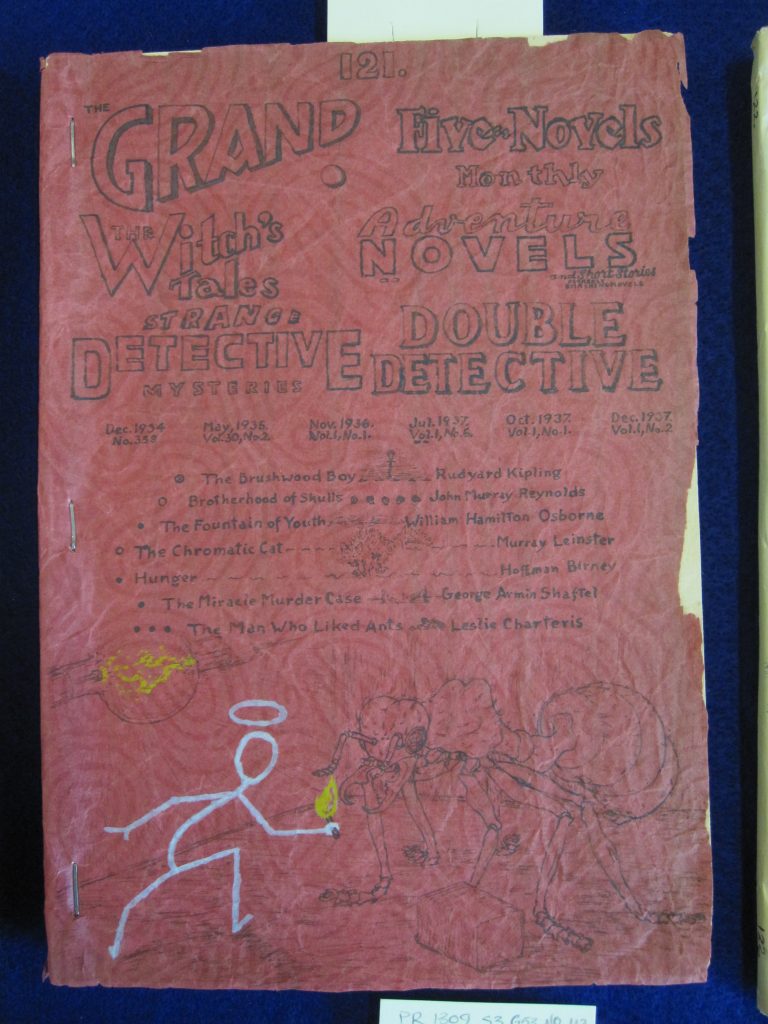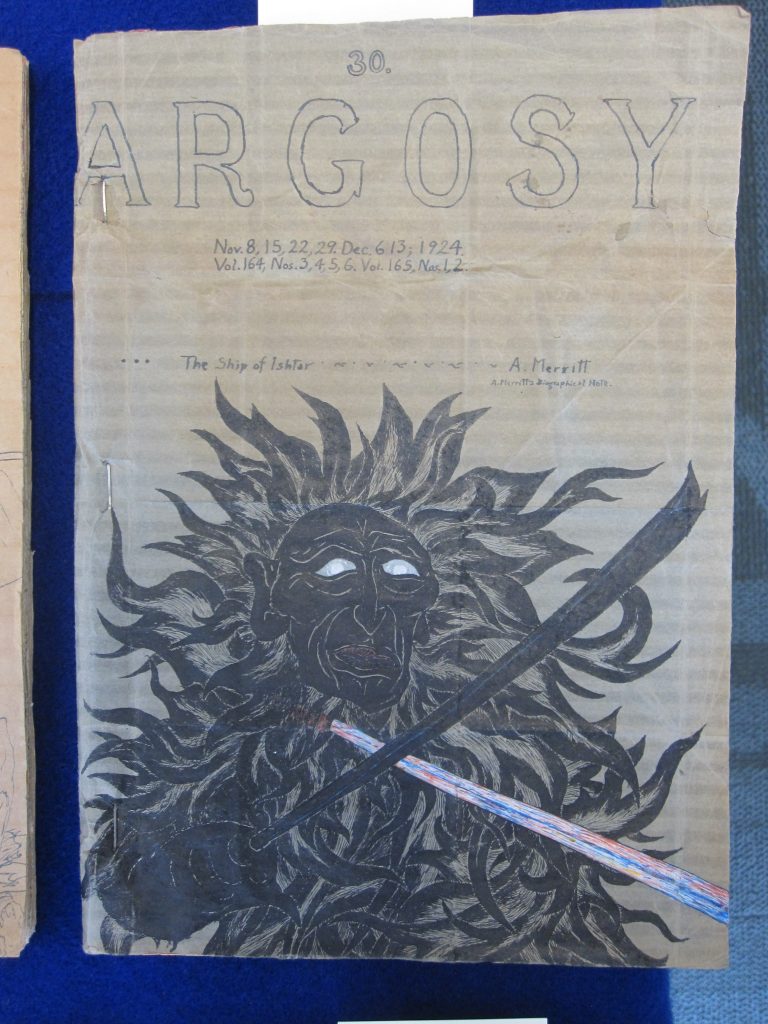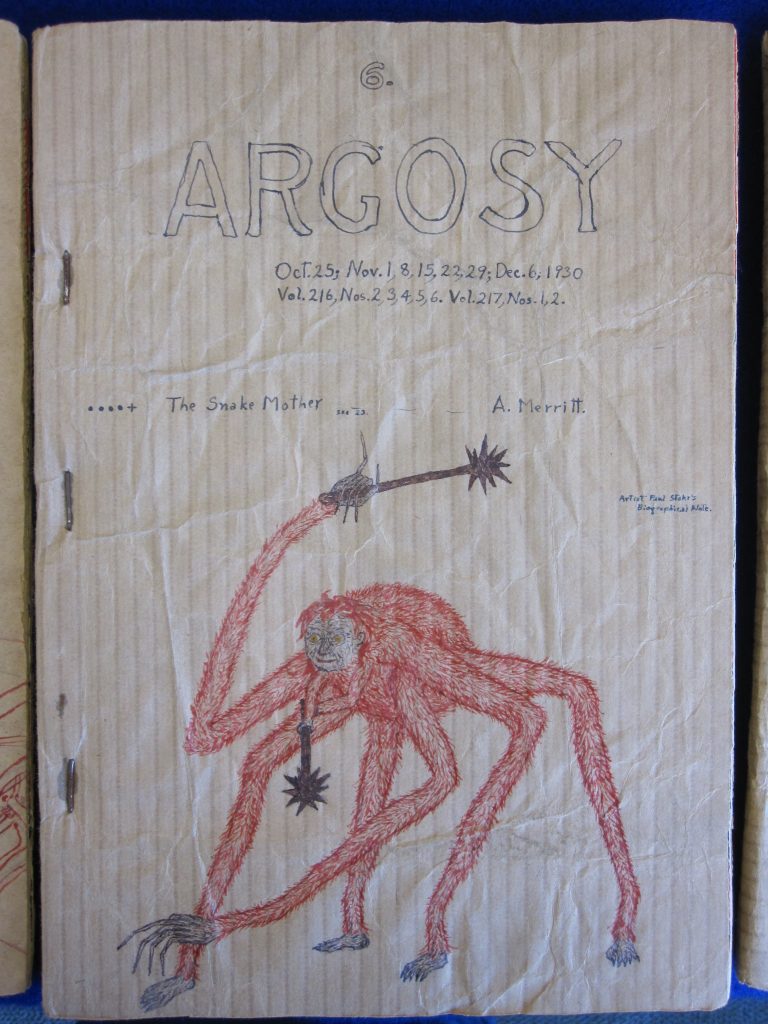
Bob Gibson speculative fiction collection highlights U of C’s off-the-beaten-path archives
By Nikayla Goddard, March 20 2019 —
The Taylor Family Digital Library at the University of Calgary holds many hidden gems through a series of out-of-the-way side doors. Stored in the TFDL and the High Density Library (HDL) near Spy Hill campus, Archives and Special Collections is home to nearly 110,000 rare books, collections and artifacts.
Archives and Special Collections consists of four sister departments: University Archives, which stores the institutional records; Special Collections, which consists of books and literary and musical archives; the Canadian Architectural Archives, which holds the largest Canadian mid-century architecture material in the country; and the Military Museum and Archives. The majority of the archives are held at the HDL, while the most frequently used and the most fragile are kept on-site at the TFDL.
TFDL senior rare books and manuscript advisor, Allison Wagner, explains that the Special Collections department didn’t really get off the ground until the early 1970s, but it has since grown to host a wide variety of interesting and unique collections. While their strongest genre is Canadian literature, there are also collections on neuroscience, recreational math, Arctic and northern studies, music and much more.
“Often when people think of a rare books room in their imagination, they think of very old leather-bound embossed things that are old,” Wagner remarked. “That’s certainly a big part of our collection … [but] books go right up until 2019 in here.”

One of the most fascinating collections is the Bob Gibson Collection of Speculative Fiction – over 35,000 books and hand-crafted anthologies spanning science and speculative fiction from the 1770s to the 1990s. Each anthology that the local Calgarian created was made by splicing stories from magazines and making them into one-of-a-kind booklets complete with a detailed cover featuring his own artwork. The library possesses approximately 888 of these handmade booklets.
Gibson’s son, Andrew, donated the collection to the library following Bob’s passing in 2001. The collection was certified as Canadian Cultural Property in 2005 and internationally recognized as one of “the most important research archives” of science fiction in 2010 according to an informative pamphlet about the collection.
U of C English professor Dr. Stefania Forlini, among a team of others including Uta Hinrichs, Bridget Moynihan and John Brosz, ran an interdisciplinary pilot project from 2013–16 called The Stuff of Science Fiction, working directly with the Gibson collection.
One of the main things that The Stuff of Science Fiction focused on was the translation of print archives into digital medium.
“When things get digitized … you get an image of every page but you get no sense of what size that page is, what the paper is made of, what the binding is like, what the weight of it is,” Forlini explained. “All of those sensory but also aesthetic qualities are kind of obscured in the digital image and we think that it changes how people read and understand what they’re reading. We wanted to find ways to improve digital displays of material print-based artifacts so that we could get in touch with what’s embedded in the stuff of print artifacts.”
Focusing on the Gibson collection provided an especially diverse digitization process as Gibson used common household items to bind and create his anthologies. Many of the booklets have covers made from household materials, such as an IBM manual, heavy graph paper or an old catalogue. Each are complete with detailed traceable references to the magazines that he drew from, as well as unique and sometimes startling cover art.
Gibson anthology cover photos courtesy of the Bob Gibson Collection, Special Collections, University of Calgary.
Another aspect of the Gibson collection that Forlini and her team explored was Gibson’s coded symbols that he used to mark each story in his anthologies – a symbol system for which he left no key. One of the results of this coding system was the Speculative W@nderverse, an interactive digital visualization of Gibson’s symbols and the corresponding themes that the team coded together.
“We still only have a handful that we are fairly confident about,” Forlini said. “But we have nowhere to check … We found about 70 or so different symbols and what we’re trying to do is see if the symbols correlate with different times … We wondered whether certain symbols are more likely correlated with certain themes, so we coded each story with specific motifs and we saw if our motifs somehow correlate with certain Gibson symbols.”
Forlini describes the digitization process of the anthologies and the Speculative W@nderverse as a public humanities project.
“It was a work by a fan that should be made available not just to scholars but also to fans,” she said.
One of the most special things about Gibson was that he was just an ordinary guy.
“Bob Gibson lived out at Springbank,” Wagner said. “He was just a guy — his family thought he was very special I’m sure, but he was just an average guy. He had been in the military, he was a commissioner, he taught some courses at the art college when it was [the Alberta College of Art] and he collected science fiction.”
“He’s a citizen scholar in many ways,” Forlini said. “He’s the fan who has turned into an amateur expert and we wanted to see if scholars could learn from this citizen scholar … he will have read and collected a lot more than most scholars will ever get their hands on.”
The newest and most exciting collection addition to the library will be the absorption of the Glenbow archives, which Wagner describes as both “really exciting and also kind of scary.” Their archives consist of mostly of Western Canadiana, including southern Alberta history, Western history, history of Calgary, arts in the city, corporate business records and Indigenous peoples records. The transfer has already begun and a majority of the archives will be moved to HDL.
“I’ve always been very fond of the Glenbow and their collections and the opportunity to actually work with them first hand is going to be exciting for me personally,” Wagner added.
One of the most important things that the Special Collections and Archives strives to do is preserve all the collections for plenty of future use.
“None of it is going to last forever and ever and ever,” Wagner says. “But a lot of this is going to last a very long time. Two hundred years from now when we’re all gone, I hope they have a better shelving system,” she joked. “But the idea is that this will still be here in 200 years for people to learn from. It’s kind of nice to think that we as the staff here have a part in preserving it and making it available to people down the road that we’ll never meet.”
The Archives and Special Collections, including the Gibson collection, are available to the public, not just to students or staff. For more information and for booking viewings of any of the rare books or collections, visit the Archives and Special Collections website at asc.ucalgary.ca.

